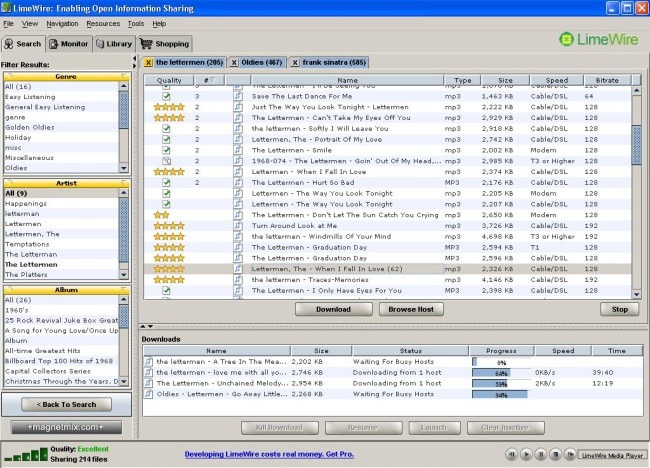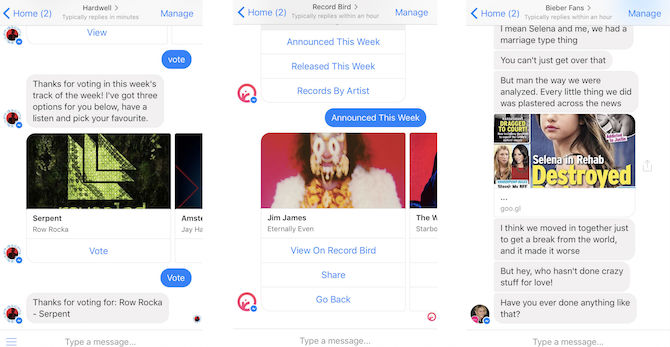Bas Grasmayer looks at how the music industry has been collecting and understanding consumer data over the years, and how that data is being used.
“Data is the new oil.” One of the key points media futurist Gerd Leonhard would underscore as our society started undergoing the transition from ownership to access models in the 2000s. While the concept was initially met with skepticism, music companies now understand the value in data and collect it en masse.
A look at some of the most popular data types through the years and how that data is being used.
Piracy and the IP address
In the early 2000s, the music business was trying its best to keep control of their product while figuring out what to do next. According to Doug Morris, who was CEO of Universal Music Group at that time, it was a “misconception” that labels were caught unaware by the digital revolution, adding that: “they just didn’t know what to do.”
What some chose to do, was to go after file-sharers in an effort to scare people away from unlicensed peer-to-peer services and torrent networks. The way these services worked (and still do) is that when you download files you’re connected to ‘peers’ who can then read your IP address unless you’ve made efforts to protect yourself.
So if you’re sharing content, called seeding, you can see who downloads it from you. If you’re downloading content, called leeching, you can see the IP addresses of those that are sharing to you. The IP address basically reveals the computer’s position on a network and traces back to individual subscribers at ISPs. If transfers are truly peer-to-peer, they’re sent directly from one IP address to another, instead of via a server in the middle. The decision was made to use these IP addresses to identify individual file-sharers and bring lawsuits against them.
There are two problems with this data however. IP addresses are only accurate up until a certain point: they point to the point from where the internet was accessed, rather than the person who did the file-sharing. This led to retired people who had never even used the internet receiving legal threats. Secondly, most applications for file sharing would turn ‘seeding’ on by default. The more serious pirates would know how to hide their IPs and not to seed to public networks, but average people would not. This meant that many of the lawsuits didn’t tackle the core issue, but instead were fighting a symptom in an effort to scare off people and retain some form of control.
“The big lesson from this era was that people wanted more convenient ways to access music.”
The big lesson from this era was that people wanted more convenient ways to access music, and as the transition from ownership to access models was put in motion, the IP address soon lost its prominence as one of the most interesting consumer data points.
Credit card info
In order to make online music consumption more convenient, it was necessary to reduce a lot of the friction around music. Apple’s iTunes first reduced friction by making transactions around digital music much less painful by saving credit card information and removing a few of the steps previously required to acquire music legally. Spotify further simplified that process by reducing it to one monthly payment.
Neither of these companies were necessarily music industry companies, but as record companies have shown in the 20th century: whoever owns the relation with the end consumer will become the dominant player. Ten years later, Spotify’s signing direct deals with artists, stealing a page from the Netflix model, and in general it looks like streaming services are now competing with labels. They have a strong advantage with this particular data point they own: the payment relation with the end consumer in the form of credit card data.
“Streaming services have a strong advantage with this particular data point they own: the payment relation with the end consumer in the form of credit card data.”
Social data & taste profiles
Then came the algorithms. For many, Last.fm was the first instance in which they saw how algorithms can track data in order to make predictions about taste. Last.fm happened in the Myspace era, with Facebook later figuring out how to monetize such taste profiles by launching an ad service that, at launch, already seemed promising, even in the eyes of Google’s much larger ad network.
Using data from Facebook, Spotify, direct sales, and live shows – labels are building taste profiles of individual consumers in order to better market to them. It’s not just the labels, it’s a general development that’s utilized by artists, managers, venues, and event promoters. Social logins, like a Facebook sign in to unlock a download, may expose a user’s liked pages, so that relations can be made. Email addresses can also be extracted from profiles, which allows marketeers to segment and target these consumers in email campaigns.
Now, with ‘chatbots’, it’s possible to automate campaigns through Facebook Messenger. This moves the contact point much closer to the taste profile, making it easier to extract data and give people more accurate and timely recommendations and suggestions. Again, Facebook’s very much in control of the relation with the end consumer and Facebook’s ready to commit to the music space.
Is the music industry at odds with consumer privacy?
Over the course of 15 years, the music business has transformed itself into a data-hungry business. While it’s not quite data-driven yet, there are many pioneering companies that are making great use of data. While many people felt the collection of IP addresses was intrusive, the amount of data the industry has on individual consumers is much greater now. In an age in which personalization and frictionless transactions are default consumer expectations, perhaps privacy becomes redundant and is happily sacrificed in order to solve issues with secondary ticketing. Yet, new technologies like blockchain can add a layer of protection, with privacy-friendly blockchain-based ad networks already being built.
“In an age in which personalization and frictionless transactions are default consumer expectations, perhaps privacy becomes redundant.”
Blockchain-based or not, taste profiles are bound to become more accurate, with artificial intelligence analyzing large datasets in order to more accurately predict hits, as well as individuals’ taste fluctuations. We’ll also be able to factor in context when making music suggestions: things like weather, time of day, activity, and even the other people in the room. In the last 60 years we’ve seen the record player move from the living room, to the bedroom, to the jeans pocket for the sake of convenience and individualization. As the music business gets better at collecting and understanding data, it’s set to further explore those themes in decades to come.
Liked this post? Check out Projecting Trends: The New Windowed Streaming Exclusive
Don’t forget to subscribe to our Synchtank Weekly newsletter to receive all of our blog posts via email, plus key industry news, and details of our podcast episodes and free webinars.

